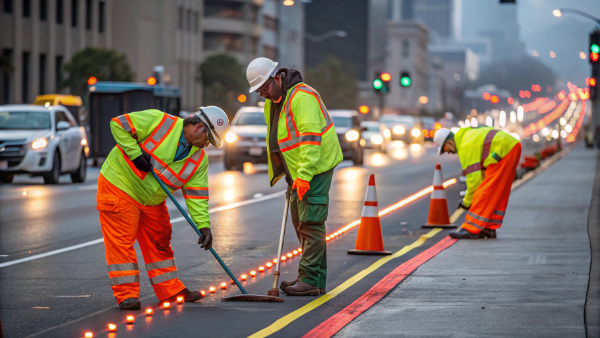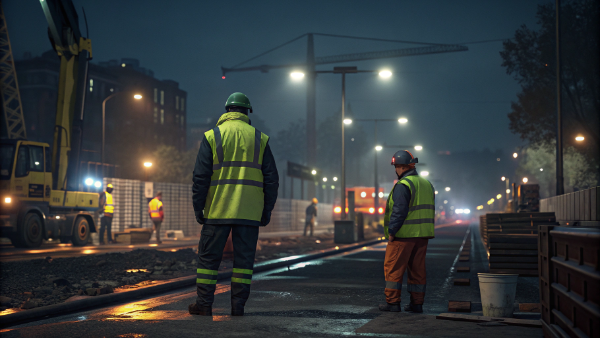Struggling to be seen in the grey UK weather? This is a serious safety risk. High-visibility yellow is the simple, life-saving solution many people turn to.
In the UK, fluorescent yellow is the most popular high-visibility color. It stands out best against most urban and rural backgrounds, especially during the day and in overcast, low-light conditions. This makes workers and pedestrians significantly safer and more visible to drivers.
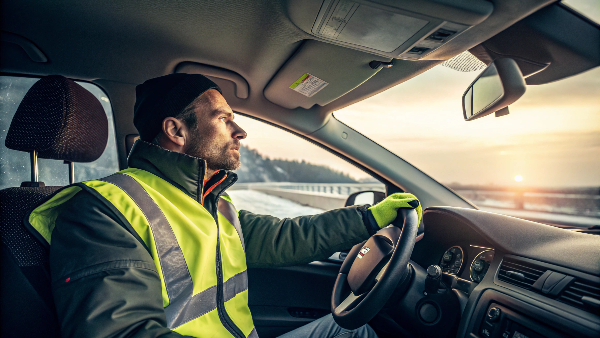
You see it everywhere in Great Britain, from construction sites to school crossings. In the United States, they often call it 'hi-viz' or 'high-visibility safety apparel'. But the choice of yellow is not just a random preference. It is based on science and strict safety standards. Let's explore why this specific color dominates the UK's safety wear landscape and what your options are.
Why are high vis jackets yellow?
Ever wonder why safety yellow is so bright? It's not just a color choice. It's science designed to prevent accidents by grabbing your attention instantly.
High-vis jackets are often fluorescent yellow because the human eye is most sensitive to this color. It appears brightest to us, especially during daytime and twilight hours. This makes the wearer highly conspicuous against almost any background, which is crucial for safety in busy environments.
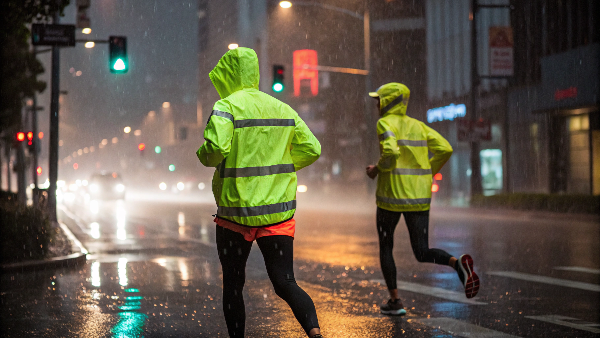
The choice of fluorescent yellow1 for safety gear is a smart decision based on human biology and physics. Our eyes have two types of photoreceptor cells: rods and cones. Cones are responsible for color vision in bright light, and they are most sensitive to light in the yellow-green part of the spectrum. This means that a fluorescent yellow1 object appears brighter than any other color, making it grab our attention quickly.
How Fluorescent Colors Work
Fluorescent colors have a unique property. They don't just reflect visible light; they also absorb invisible ultraviolet (UV) light from the sun and re-emit it as longer-wavelength visible light. This process makes the material look like it's glowing, especially in low-light conditions like dawn, dusk, or on a cloudy day. As a manufacturer, we at Vissafety use premium fluorescent dyes to ensure our garments offer maximum brightness and meet global standards.
| Feature | Fluorescent Yellow | Standard Yellow |
|---|---|---|
| Light Source | Reflects visible light + converts UV light | Reflects visible light only |
| Apparent Brightness | Extremely high, seems to "glow" | Normal, dependent on ambient light |
| Best Use Case | Daytime, dawn, dusk, overcast days | General use, not for safety |
| Compliance | Meets EN ISO 20471 requirements | Does not meet hi-vis standards |
What color hi-vis should I wear in the UK?
Choosing the wrong hi-vis color can be dangerous. It might not meet legal standards or provide enough contrast. Let's make sure you pick the right one.
In the UK, the right color depends on your work environment. Fluorescent yellow[^2] is the most common and versatile. However, fluorescent orange is required for railway workers to ensure they stand out against green and natural landscapes. Always check your site's specific requirements.
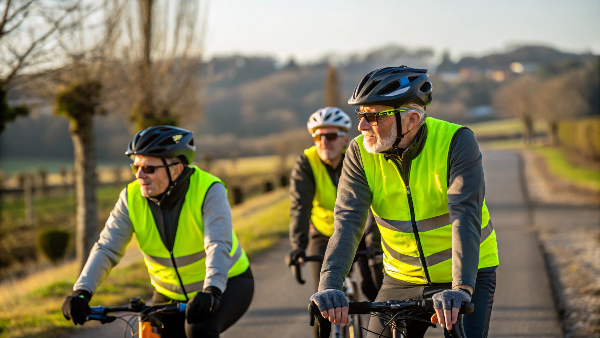
When you select high-visibility clothing in the UK, the most important factor is the environment where it will be worn. You need the color that creates the highest contrast with the background. For most jobs in towns and cities, yellow is the default choice. It stands out very well against concrete, asphalt, and typical urban scenery. That is why you see it on road workers, construction staff, and event marshals.
Choosing Based on Environment
However, if the background is very light or contains a lot of yellow, another color might be better. The best example of this is the UK railway network. The standard RIS-3279-TOM (formerly GO/RT 3279) mandates that all high-visibility clothing2 used by trackside workers must be fluorescent orange. This is to prevent any confusion with yellow or green railway signals and to make sure workers stand out against the green, leafy backdrops common along railway lines. We produce millions of units of both colors, so we understand how critical it is to match the color to the job.
| Work Environment | Recommended Color | Reason |
|---|---|---|
| Urban / Roadside | Fluorescent Yellow | Highest contrast against grey urban backgrounds. |
| UK Railways | Fluorescent Orange | Required by RIS-3279-TOM3 standard; avoids signal confusion. |
| Forestry / Rural | Fluorescent Orange | Better contrast against green and brown landscapes. |
| Airports / Docks | Yellow or Orange | Depends on specific site rules and backgrounds. |
Is yellow or orange hi-vis better?
Deciding between yellow and orange feels confusing. Choosing the less effective color for your environment puts safety at risk. Let's clear up which one is better.
Neither color is universally "better"; it depends on the background. Yellow offers the highest daytime visibility against most urban and varied backdrops. Orange provides superior contrast against snow, sky, and lush green environments, which is why it's used in forestry and on railways.
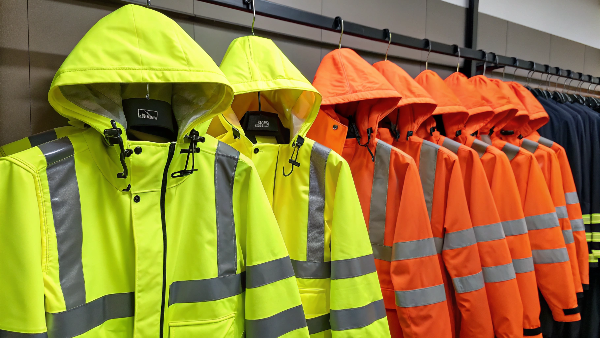
The debate between yellow and orange isn't about which color is "best" overall, but which is best for a specific situation. Both colors are excellent choices for high-visibility clothing, but they excel in different conditions. As a long-time manufacturer, we've helped countless clients, like Danny Cheng in the US, make the right choice for their specific market. For his business supplying construction and logistics sectors in North America, fluorescent yellow certified to ANSI/ISEA 107 is often the top pick because it performs so well in a wide range of settings. For another client in a different industry, orange might be the necessary choice. It all comes down to contrast and compliance.
Direct Color Comparison
Understanding the strengths of each color helps you make an informed safety decision.
| Comparison Factor | Fluorescent Yellow4 | Fluorescent Orange |
|---|---|---|
| Daytime Conspicuity | Highest. The human eye is most sensitive to yellow. | Very high, but slightly less than yellow. |
| Urban Contrast | Excellent. Stands out against concrete and asphalt. | Good. Still very visible but offers less contrast. |
| Natural Contrast | Good. Visible against most natural backgrounds. | Excellent. Superior against green foliage, soil, and snow. |
| UK Standard | EN ISO 204715 (General Use) | EN ISO 20471 & RIS-3279-TOM (Railway Specific) |
| Primary Users | Construction, road work, cyclists, event staff. | Railway workers, forestry, some US road crews. |
What is the British standard for hi vis?
Is your hi-vis clothing actually compliant? Non-certified gear offers a false sense of security and can lead to serious accidents. Let's check the official standard.
The main British and European standard for high-visibility clothing is EN ISO 20471. It specifies the requirements for the fluorescent material, the retro-reflective tape, and the design. The standard has three classes, with Class 3 offering the highest level of visibility.
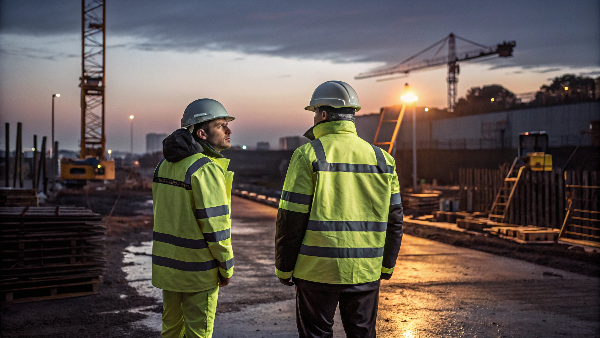
For us, as a manufacturer, standards are not just rules; they are the foundation of worker safety. The EN ISO 20471 standard is the key benchmark for high-visibility clothing in the UK and across Europe. It's a complex document, but it essentially governs three things: the fluorescent background material, the retro-reflective tape, and the garment's design. The background material must be a certified fluorescent color to make you visible during the day. The reflective tape must bounce light back to its source, like car headlights, to make you visible at night. The design dictates how much of each material is needed and where it must be placed on the body for 360-degree visibility. Our in-house laboratory has over 75 testing devices to ensure every product we ship meets these strict requirements.
The Three Classes of EN ISO 20471
The standard is broken down into three classes based on the level of risk. Class 3 provides the highest level of protection.
| Class | Minimum Fluorescent Material | Minimum Reflective Tape | Example Garment | Intended Risk Level |
|---|---|---|---|---|
| Class 1 | 0.14 m² | 0.10 m² | Trousers, some vests | Low Risk |
| Class 2 | 0.50 m² | 0.13 m² | Vests, short-sleeve shirts | Medium Risk |
| Class 3 | 0.80 m² | 0.20 m² | Jackets, coveralls | High Risk |
Can you wear a black or pink hi vis?
Want to stand out with a different color? But non-compliant colors like black or pink might not be safe. They could even violate workplace rules.
You can wear hi-vis clothing with black or pink panels, but it must still meet EN ISO 20471 standards. The fluorescent and reflective materials must cover a minimum surface area. Purely black or pink garments are not compliant for high-risk environments and are considered enhanced visibility only.
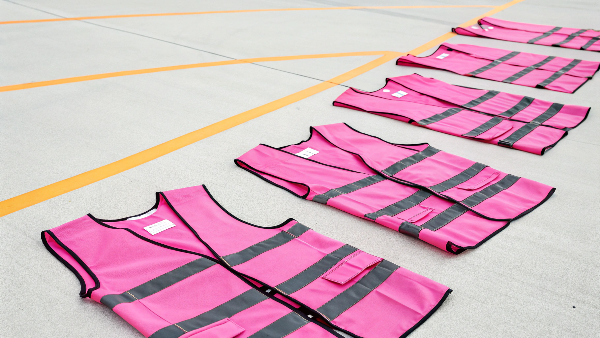
Many of our clients want to add their brand colors or stylish elements to their safety wear. This is absolutely possible, but safety and compliance must come first. You often see hi-vis jackets with black panels on the lower torso and cuffs. This is a practical design choice. The dark fabric is placed in high-wear areas to hide dirt and scuffs, keeping the garment looking professional for longer. However, the garment must still have enough fluorescent yellow or orange material and reflective tape to meet the minimum area requirements for its class under EN ISO 20471. Purely black garments do not offer high visibility protection.
High Visibility vs. Enhanced Visibility
It's important to know the difference. Colors like pink, green, or blue can be bright, but they are not certified fluorescent safety colors. These are used for "enhanced visibility" garments under a different standard (EN 17353). They are great for low-risk situations, like jogging in a park, but they are not a substitute for proper hi-vis in a work environment. We specialize in customizing compliant high-visibility apparel, allowing companies to add logos or unique color panels while ensuring their workers are fully protected.
| Standard | Purpose | Certified Colors | Use Case Example |
|---|---|---|---|
| EN ISO 20471 | High Visibility (Occupational) | Fluorescent Yellow, Orange, Red | Roadside work, construction sites |
| EN 17353 | Enhanced Visibility (Non-professional) | Any bright/fluorescent color | Jogging, cycling, school events |
Conclusion
In the UK, yellow hi-vis is common for its scientific effectiveness. But the key is choosing the right, certified color for your specific job to ensure maximum safety.
-
Explore how fluorescent yellow enhances visibility and safety, making it essential for protective clothing. ↩ ↩
-
Selecting the right high-visibility clothing is crucial for safety. Find best practices to ensure compliance and visibility. ↩
-
Understanding the RIS-3279-TOM standard is vital for compliance in railway work. Discover its requirements and implications. ↩
-
Explore the advantages of Fluorescent Yellow, known for its exceptional visibility in urban settings, crucial for safety. ↩
-
Understand the EN ISO 20471 standard, which ensures high visibility clothing meets safety requirements for various industries. ↩

